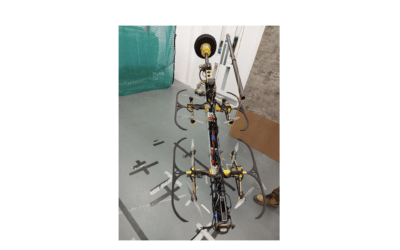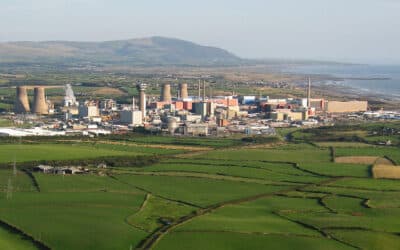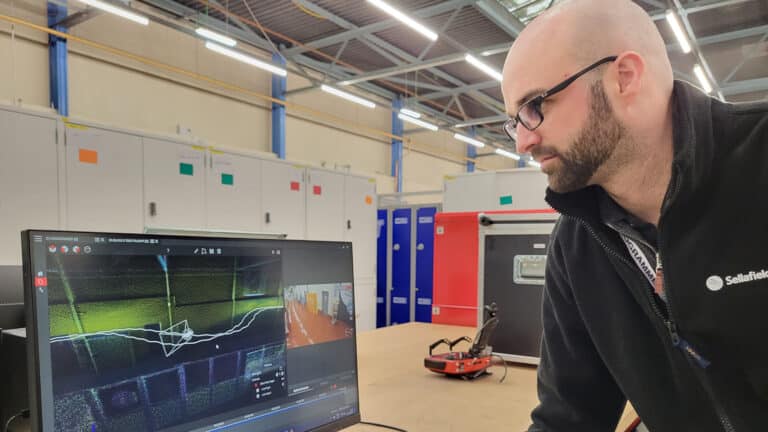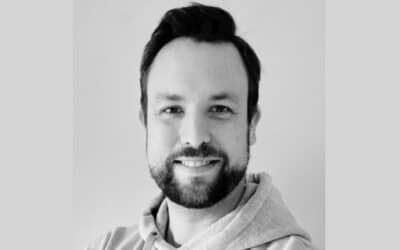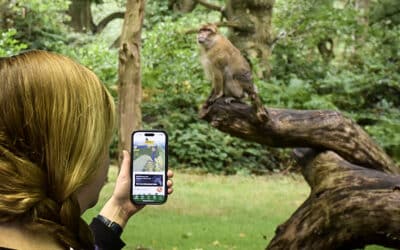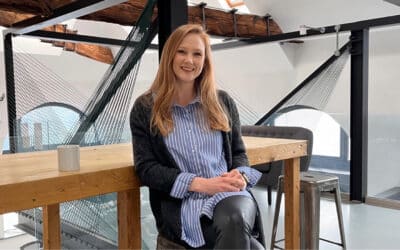Drone pilots have successfully completed two flight firsts on a UK nuclear site, leading the way to increased safety of employees during decommissioning.
The successful deployment of the Elios 3 drone equipped with a LiDAR sensor marked a major milestone for the Unmanned Aerial Vehicle (UAV) team, enabling Sellafield Ltd to achieve unparalleled efficiency in mapping and 3D modelling.
Hot on the heels of this flight, the team then successfully flew the Elios 3 drone with a RAD (Radiation Activity Detection) dosimeter which they hope will allow them to map radiation hotspots in areas before other colleagues go into unused areas of the site.
Amanda Smith, UAV equipment programme lead, based at Sellafield Ltd’s Engineering Centre of Excellence in Cleator Moor, highlighted the safety and financial benefits of deploying a drone for the mapping: “This first flight of Elios 3 with the LiDAR payload was a success and the data collected is now being processed in a Computer Aided Design system which will produce a 3D model of the area in question, helping to inform engineering decisions going forwards,” she said. “Sending a drone into this tight and unused space rather than an employee in the first instance reduces risk, and also saves time and money.”
The debut flight wasn’t without challenges, however. Smith revealed that the building plans for the site were decades old, resulting in unexpected obstacles and a tighter access area than anticipated: “[The pilot] had to adapt to the changing circumstances incredibly quickly as he only had eight minutes of battery power to get into the area, map it with the equipment, and get out again,” she explained. “We always have two pilots on every flight as, even though it is a short flight, the levels of concentration required by the pilot are extremely high and at Sellafield we want to ensure the safety of our pilots and the equipment.”
Sam Jay, UAV equipment engineer and chief pilot, added: “The flights can be very intense and in this case there was pipework everywhere. The drones fly in a cage with sensors so if they do happen to touch anything they won’t be damaged. The hardest part is remembering your way out again. In such a short space of time you need to get in and out quickly. There can be a lot of pressure as not getting the drone out and having to send someone in after it would defeat the point of the flight.
“Now that we have scanned the area the engineers can design scaffolding before they go to unblock a pipe which has been causing an issue. By deploying the drone, and speeding up the process, we have potentially saved the company, and the taxpayer, hundreds of thousands of pounds.”
Buoyed by the success of this flight, Sellafield made history again as the first UK nuclear site to employ a drone equipped with a radiation monitor. This addition aims to assess radiation levels and identify potential hot spots in areas where radiation exposure levels are unknown.
The deployment of the drone with a radiation payload demonstrates the organisation’s commitment to exploring novel solutions for radiation assessment, reducing risk to those working on the site.
Smith said: “By flying with a radiation monitor we hope to be able to provide a map of radiation hotspots within areas to assess where it may or may not be safe for colleagues to enter.”
Tom Calverley, a radiometric physicist seconded to the UAV team, added: “The first flight was a great success but there are many safety checks to go through before we can rely on the data we obtain.
“We must ensure that the readings are accurate and once we have confidence in the numbers from the dose readings it can help with planning jobs and other radiation monitoring applications.. We take exposure to radiation extremely seriously on the site, and we carefully plan and minimise any exposure that colleagues may face as part of their job.”
By leveraging the capabilities of their fleet of drones Sellafield Ltd embraces the future of aerial exploration, improving nuclear site safety and achieving efficiencies.


